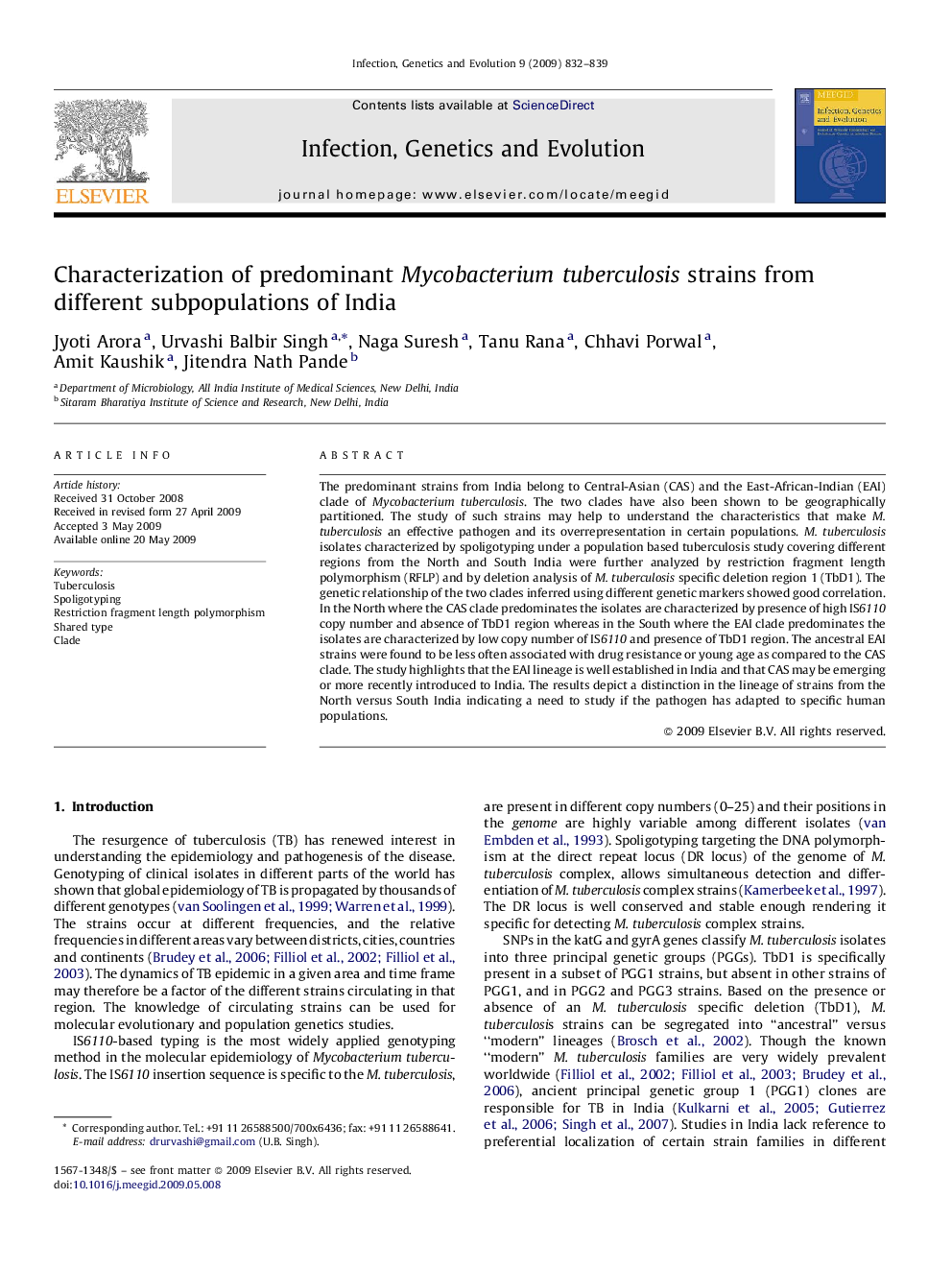| کد مقاله | کد نشریه | سال انتشار | مقاله انگلیسی | نسخه تمام متن |
|---|---|---|---|---|
| 2823351 | 1161383 | 2009 | 8 صفحه PDF | دانلود رایگان |

The predominant strains from India belong to Central-Asian (CAS) and the East-African-Indian (EAI) clade of Mycobacterium tuberculosis. The two clades have also been shown to be geographically partitioned. The study of such strains may help to understand the characteristics that make M. tuberculosis an effective pathogen and its overrepresentation in certain populations. M. tuberculosis isolates characterized by spoligotyping under a population based tuberculosis study covering different regions from the North and South India were further analyzed by restriction fragment length polymorphism (RFLP) and by deletion analysis of M. tuberculosis specific deletion region 1 (TbD1). The genetic relationship of the two clades inferred using different genetic markers showed good correlation. In the North where the CAS clade predominates the isolates are characterized by presence of high IS6110 copy number and absence of TbD1 region whereas in the South where the EAI clade predominates the isolates are characterized by low copy number of IS6110 and presence of TbD1 region. The ancestral EAI strains were found to be less often associated with drug resistance or young age as compared to the CAS clade. The study highlights that the EAI lineage is well established in India and that CAS may be emerging or more recently introduced to India. The results depict a distinction in the lineage of strains from the North versus South India indicating a need to study if the pathogen has adapted to specific human populations.
Journal: Infection, Genetics and Evolution - Volume 9, Issue 5, September 2009, Pages 832–839